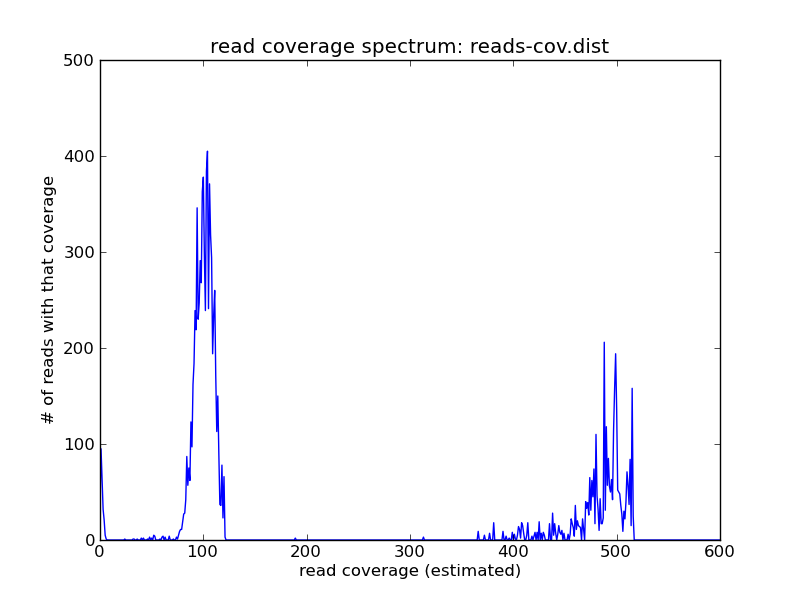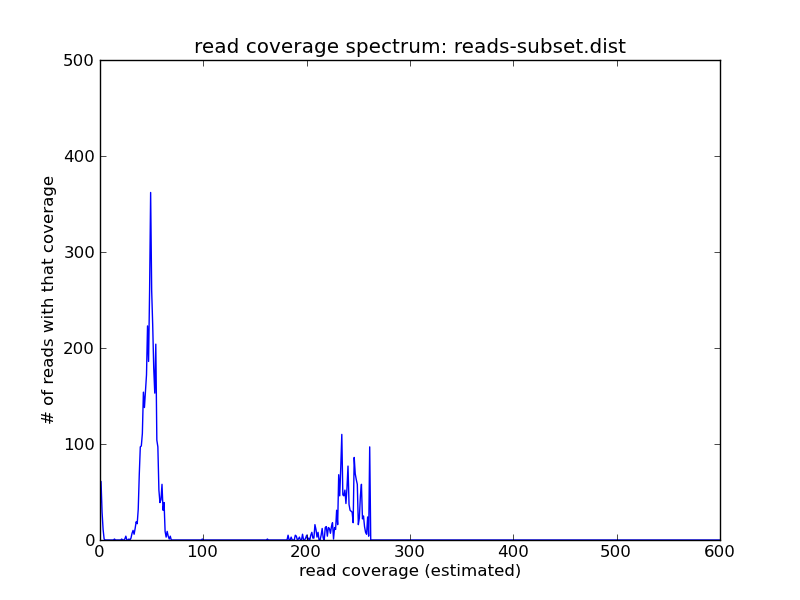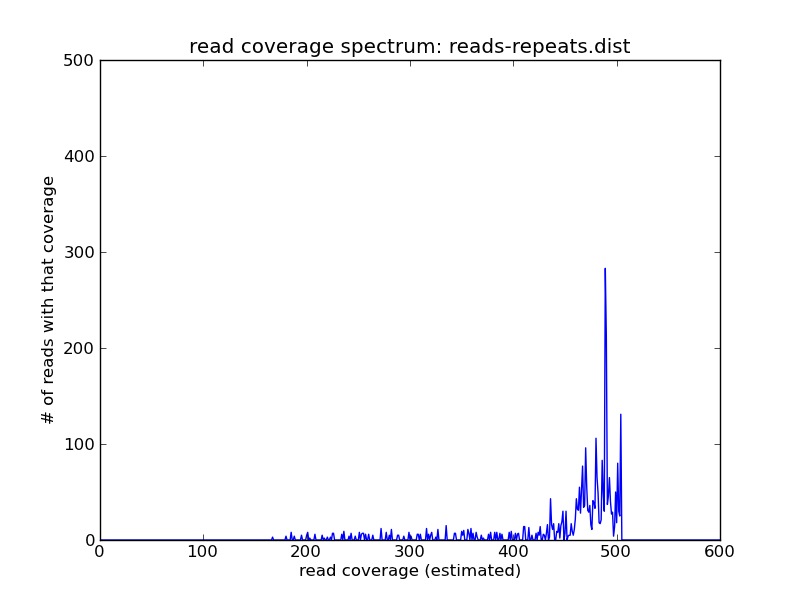Recipe 2: Collect a subset of reads from a high-coverage data set¶
The below is a recipe for subsetting a high-coverage data set to a given average coverage. This differs from digital normalization because the relative abundances of reads should be maintained – what changes is the average coverage across all the reads.
Uses for this recipe include subsampling reads from a super-high coverage data set for the purpose of assembly, as well as more esoteric reasons (see the bottom of the post). This approach won’t work on digitally normalized reads, and is primarily intended for genomes and low-complexity metagenomes. For high-complexity metagenomes we recommend partitioning.
Note: at the moment, the khmer scripts collect-reads.py and
slice-reads-by-coverage.py are on the master branch of the khmer
repository, but not in any numbered release. Once we’ve merged it
into the master branch and cut a release, we’ll remove this note and
simply specify the khmer release required.
Let’s assume you have a simple genome with some 5x repeats, and you’ve
done some shotgun sequencing to a coverage of 150 or higher. If your reads are
in reads.fa
load-into-counting.py -x 1e8 -k 20 reads.kh reads.fa
~/dev/khmer/sandbox/calc-median-distribution.py reads.kh reads.fa reads-cov.dist
./plot-coverage-dist.py reads-cov.dist reads-cov.png --xmax=600 --ymax=500
and looks like this:

You see the same peaks at roughly the same places.
Now use collect-reads.py to subset the data to a lower average coverage
of 50
~/dev/khmer/sandbox/collect-reads.py -x 1e8 -C 50 -k 20 reads.subset.kh reads.fa -o reads.subset.fa
Here, collect-reads.py is walking through the data set and
computing a running average of the coverage of the last 1000 reads.
Once it hits the specified average coverage of 50 (-C 50) it stops
collecting the reads. Take a look at the read coverage spectrum for
the subsetted data:
~/dev/khmer/sandbox/calc-median-distribution.py reads.subset.kh reads.subset.fa reads-subset.dist
./plot-coverage-dist.py reads-subset.dist reads-subset.png --xmax=600 --ymax=500
and compare the resulting plot with the one above –

Here you can see that the coverage spectrum has been shifted left and down by the subsampling (which is what you’d expect).
Note that picking the coverage that you want is a bit tricky, because it will be the average across the reads. If you have a highly repetitive genome you may need to go for something higher than your desired single-copy genome coverage, because the repeats will skew your average to the right.
Esoterica¶
If the peaks look good, you can use the output counting table
reads.subset.kh as an argument to slice-reads-by-coverage (see
for example ../001-extract-reads-by-coverage). If you use the
original reads, this will then give you _all_ the reads that cluster
by coverage with that peak. For example,
~/dev/khmer/sandbox/slice-reads-by-coverage.py reads.subset.kh reads.fa reads-repeats.fa -m 200 -M 300
will give you all the reads from the repetitive component, which will be much higher coverage in the combined data set; take a look:
load-into-counting.py -x 1e8 -k 20 reads-repeats.kh reads-repeats.fa
~/dev/khmer/sandbox/calc-median-distribution.py reads-repeats.kh reads-repeats.fa reads-repeats.dist
./plot-coverage-dist.py reads-repeats.dist reads-repeats.png --xmax=600 --ymax=500

Here the slice specified (-m and -M) is with respect to the
read abundances in reads.subset.kh). This allows you to more
explore and subset large data sets than you would otherwise be able
to, and also avoids some khmer-specific issues with
counting k-mers that are higher abundance than 255.
Resources and Links¶
This recipe is hosted in the khmer-recipes repository, https://github.com/ged-lab/khmer-recipes/.
It requires the khmer software.
LICENSE: This documentation and all textual/graphic site content is licensed under the Creative Commons - 0 License (CC0) -- fork @ github.
comments powered by Disqus